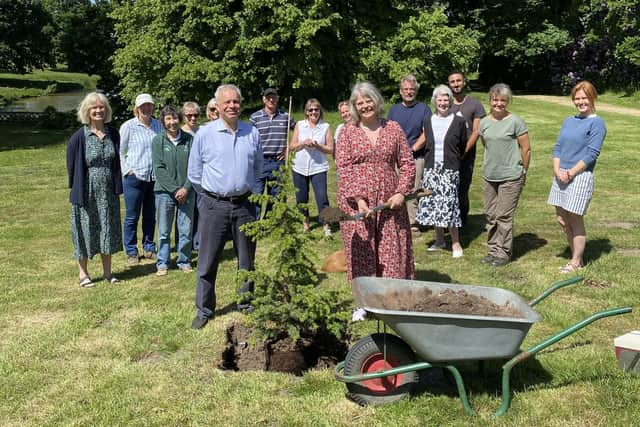Parham House: This is why a cedar tree has been planted and how the house was saved 100 years ago
and live on Freeview channel 276
In May 1922, the Hon. Clive and Alicia Pearson acquired Parham House near Pulborough and embarked on a mission to protect the dilapidated building - at a time when historic homes such as this were being abandoned and so many were lost.
Not only did they want to restore the stunning property, nestled at the foot of the South Downs, but they were determined to share it with the community at large - by opening it to the public shortly after the second world war.
Advertisement
Hide AdAdvertisement
Hide AdAppropriately, given their commitment to the house, the tree was presented by the seasonal and permanent staff there to mark the centenary.


Today Parham House is owned by a charitable trust and is the home of their great granddaughter Lady Emma Barnard, her husband James and their family.
Lady Emma, James and various members of the Parham team planted the cedar in the Pleasure Grounds, near the Maze where it will be enjoyed by visitors for many hundreds of years to come as it reaches full size.
Describing the purchase of Parham in 1922, Lady Emma said of her great grandparents: "Clive Pearson's parents couldn't understand why they wanted to buy an old dilapidated house rather than build a state of the art new one with all the mod cons.
Advertisement
Hide AdAdvertisement
Hide Ad"But they were absolutely adamant that they wanted to save it and when they saw Parham they fell completely in love with it. It was in a very, very bad way and they knew they had to come here and look after this wonderful place.
"They were extraordinary because they were doing it not for themselves - and the more I live here and the older I get the more I realise they were saving Parham for Sussex, they were also saving Parham for England and actually for the world. They were at the forefront of what is now the heritage industry.
"They completely understood the importance of these old places and when they opened it to visitors in 1948 they were clear they wanted to share it."
After so much loss for so many people in World War II, Parham was a tangible example of the England which people had sacrificed so much to defend.
Advertisement
Hide AdAdvertisement
Hide Ad"I think that was behind a lot of their subsequent collecting and the joy they took in opening it to visitors and sharing it with them. It wasn't about them. They weren't grand and they weren't trying to show off. They were very modest, very shy people. They got great pleasure in restoring this small corner of Sussex because they saw something that was worthy of saving and they felt that they must do it. I think that's remarkable.
"My great aunt took up their mantle and now it is a charitable trust and it is very much what we have tried to do - to move forward with their ethos."
Lady Emma has been named as the next Lord-Lieutenant of West Sussex - the Queen's personal representative - from August 1.